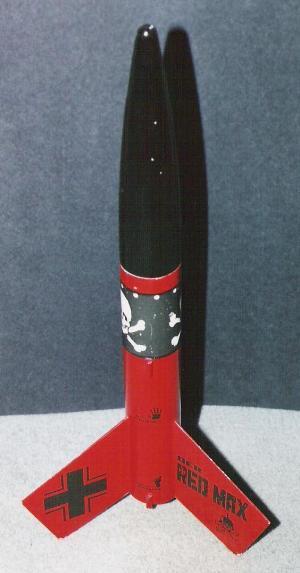Don't miss Amazon's Prime Days sale.
Welcome
Welcome to RocketReviews.com (formerly EMRR).
RocketReviews.com is the home of almost 5000 reviews of rocketry kits and products. Written by visitors to RocketReviews.com like you, the reviews cover everything from low-power model rocket kits to high-power rocket motors.
The site's Flight Log allows you to record and share your rockets and their flights. The Builds feature helps you document your rocketry projects.
At RocketReviews.com, you'll also find a large collection of rocketry resources such as a list of rocketry clubs, and large libraries of OpenRocket design files and Rocksim design files. A number of rocketry tools and calculators are available to help you design, build, and fly your rockets.
As you explore RocketReviews.com, you'll also find a number of fun things such as a huge library of rocketry videos and a collection of photo albums.
 |
 |
Featured Review
Caveman Rocketry Der Red Max
Manufacturer: Caveman Rocketry
Construction Rating: 




Flight Rating: 




Overall Rating: 




Contributed by Tim Doll
Brief: The Caveman "Der Red Max" is ostensibly a clone of the classic Estes "Der Red Max", first released in 1971 as part of the Estes Citation line. Although it is really just a simple 3FNC rocket, the politically incorrect, silly "Hogan's Hero's German" humor and skull & crossbones motif made "Der Red Max" a popular, fun rocket. The Estes Der Red Max was discontinued in 1986, however cloning Der Red Max is relatively simple since most of the parts are readily available - only the decals and nose cone are not currently available as individual parts from Estes. The decals are available from Tango Papa, the PNC-60AH nose cone is a litt Read the rest of the review ...
 le trickier (it was in the now discontinued Estes PNC-60B nose cone assortment - many low traffic hobby shops still have some) however the Estes Mean Machine uses the same nose cone if you don't mind doing a kit bash. On the other hand, there is something to be said for the simplicity of getting everything together in one box, so I gave the Caveman Der Red Max a try.
le trickier (it was in the now discontinued Estes PNC-60B nose cone assortment - many low traffic hobby shops still have some) however the Estes Mean Machine uses the same nose cone if you don't mind doing a kit bash. On the other hand, there is something to be said for the simplicity of getting everything together in one box, so I gave the Caveman Der Red Max a try.
Sponsored Ads
 |
 |












